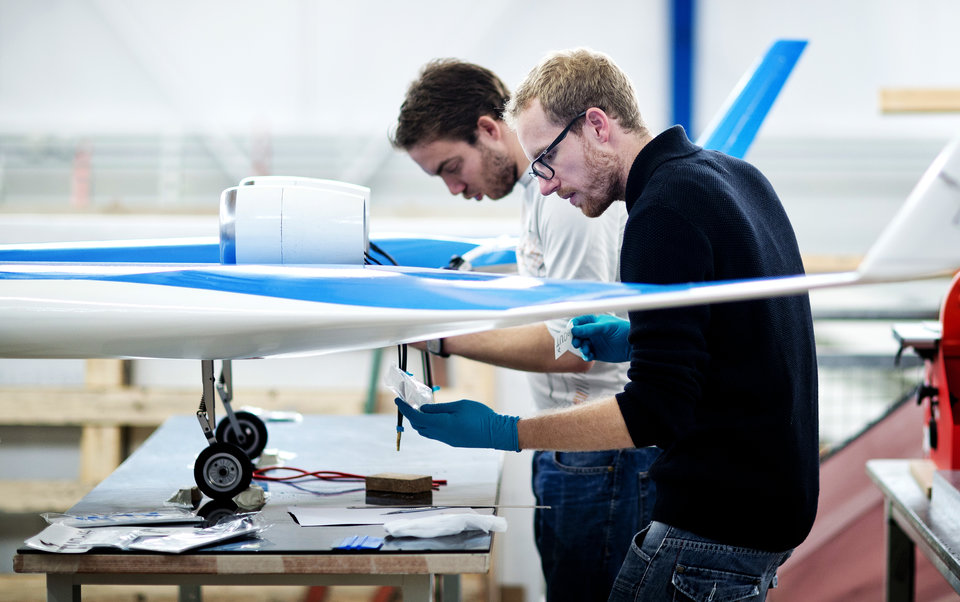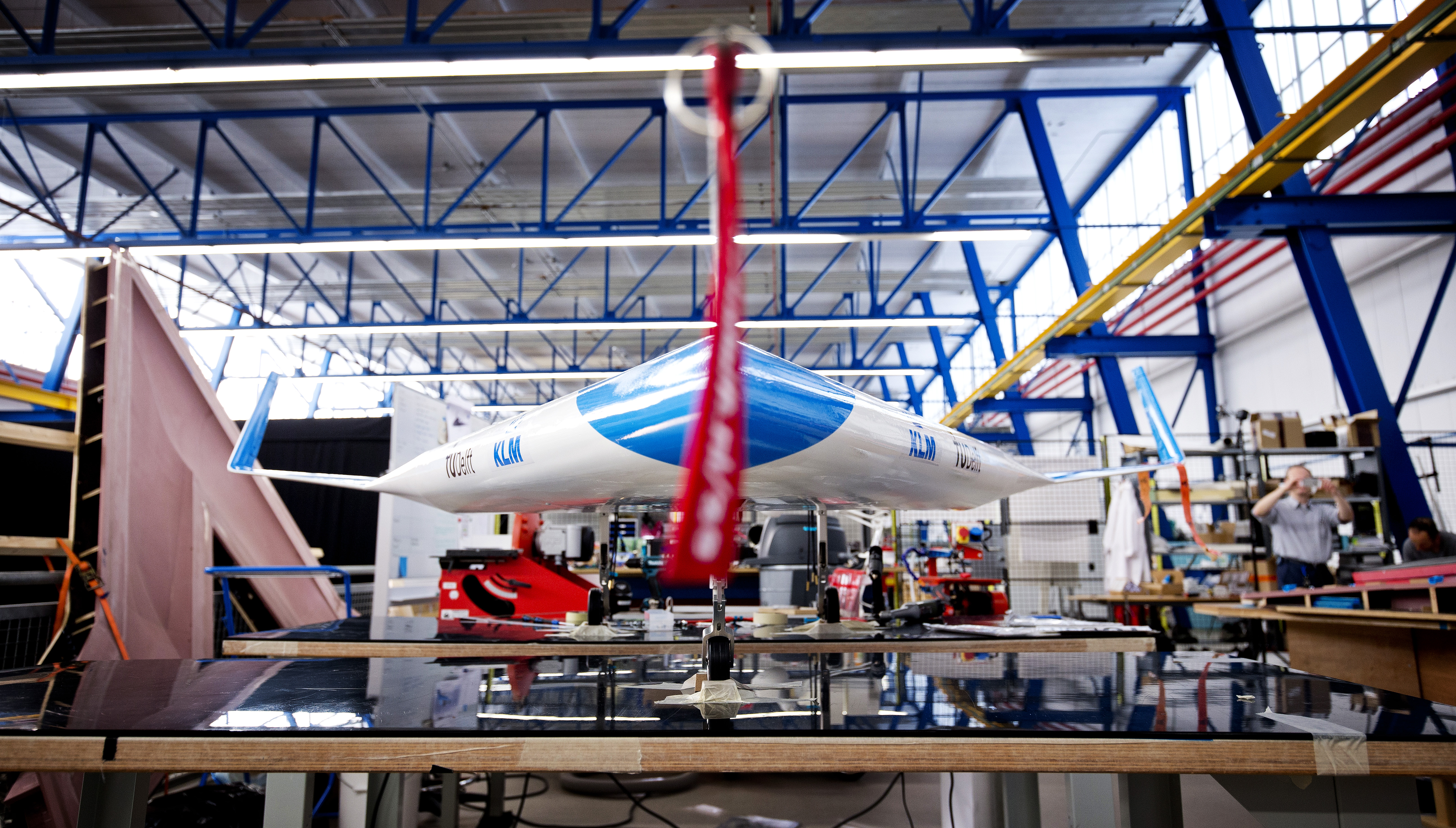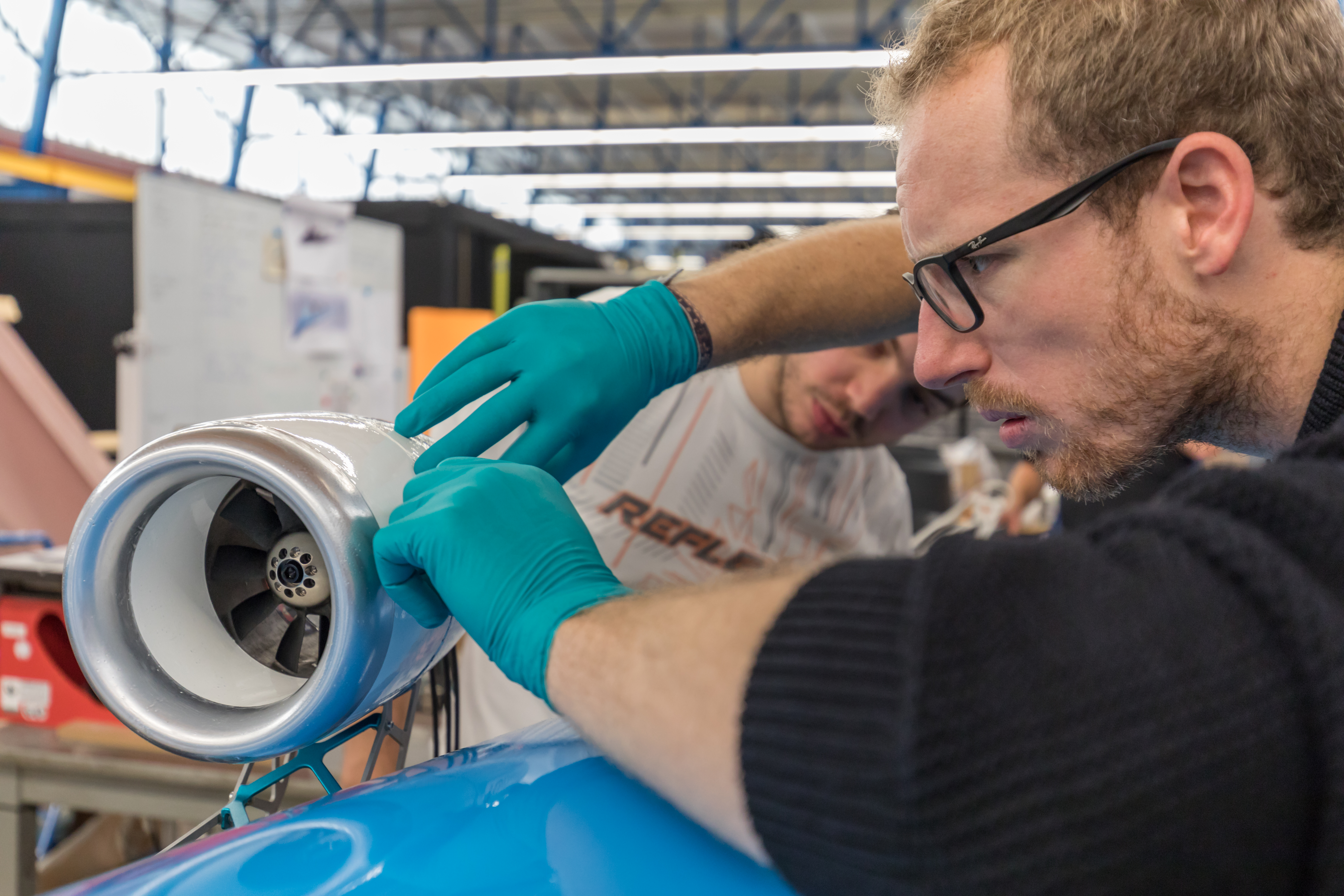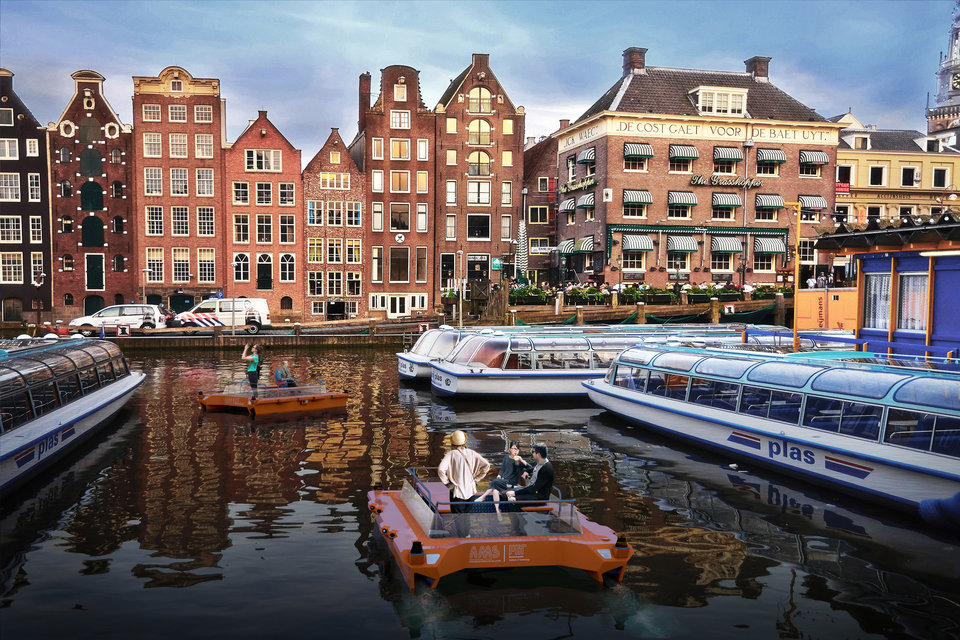The lorry pulls up very slowly, en route from the Faculty of Aerospace Engineering to Schiphol. The cargo on board is precious: the 3-meter-wide flying scale model of the revolutionary Flying-V aircraft. Chief engineer Malcom Brown: “The Flying V will use far less energy thanks to its aerodynamic V-shape.”
At the Faculty of Aerospace Engineering, work has been underway since 2017 on the Flying-V, a revolutionary, energy-efficient aircraft design in which passengers, cargo and fuel are all located in the wing. Computer simulations and wind tunnel tests show that the aircraft uses 20% less fuel than the most modern aircraft of today, the Airbus A350. Flight tests with a flying scale model are needed to test how a flying V actually behaves in the air. Will the aircraft remain stable? What is the ideal angle for take-off and landing? When KLM comes on board as a partner in the spring of 2019, there is suddenly a hard deadline: the model must be ready for the KLM Experience Days in honour of KLM100.

Scale model
Wing span: 3.06 mLength: 2,76 m
Weight: 24,8 kg
Material: composite
Electronics: control system for drones, measuring and control systems, autopilot
Engines: two 4kW electric ‘ducted fan’ engines
Batteries: 6 kg LiPo
An even bigger challenge than the deadline
Malcom Brown, a down-to-earth aerospace engineer from Johannesburg, South Africa, is assigned to get the job done: "What makes building a scale model of such a radically different type of aircraft so special is that we are doing everything for the first time. There is no manual or procedure. We discover and find out while we build. You learn a lot, but a project like this is not always easy to plan. When we started work we found out, however, that we had an even bigger challenge than the strict deadline."The biggest challenge Malcom’s team – consisting of composites expert Frank van Wissen, electronics expert Alberto Ruiz Garcia, CAD designer Daniel Atherstone and two master's students - encounters concerns the weight of the aircraft. Brown: "We struggled a lot to keep the vehicle under 25 kg." The 25 kilogram has nothing to do with the airworthiness of the aircraft, but with the drone laws and regulations. For drones that are heavier than 25 kg, the certification requirements are much stricter and take longer. Brown: “It's very close. For example, we had agreed for the KLM Experience Days that we would paint the aircraft in KLM colors. But even that thin layer of paint can make the aircraft too heavy.” That’s why weight reduction was an important factor in the team’s choices.
Lightweight
Composite expert Van Wissen, explains the choice for this material: “The structure is made of fiberglass epoxy with foam stiffening forming a strong lightweight sandwich panel. Carbon fiber is used for parts that need extra strength. That makes the scale model light, strong and affordable." The pylons connecting the engines and the landing gear to the scale model were designed by CAD expert Daniel Atherstone: "By using a new version of our design software that has topology optimisation I was able to find the right balance between stiffness and weight." But the team also came across an unexpected set-back: the filler they were planning to use to attach the winglets to the wingtips will make the aircraft just a little too heavy.
The nacelle covers for the two electric ducted fan engines mounted on top of the scale model also had to be lightweight. Brown: “The engines are from a German supplier, but we designed the nacelles specifically for this scale model. They now ensure good aerodynamics of the aircraft and engines and they’re lightweight, because we only used one layer of carbon fiber for them.”
Control and measurements
The scale model has intricate control and measurement electronics on board. Team member Alberto Ruiz Garcia: “We have both on-board control systems that ensure good control of the drone, and sensors and computers that measure and communicate the flight characteristics of the model. There is also an autopilot on the aircraft that can safely return the aircraft in case the pilot loses signal.” To reduce the risks the team chooses to implement an off-the-shelf operating system for drones, but the measuring instruments are tailor-made and the interfaces are designed in-house.
Foam balls
The team luckily came up with a solution for the heavy winglet filler: “We added polystyrene balls to the filler. A solution that had been used for other types of glue and resin, but never for this particular filler. In the end it enabled us to reduce the weight sufficiently while maintaining the stiffness of the connection.” Current weight of the model: 24.8 kilograms.
KLM100
In the end the deadline also worked out well. On September 30, Malcom and Alberto - carefully - brought the scale model to Schiphol with a truck. From 3 to 13 October, around 65,000 people will visit the scale model during the KLM Experience Days. These take place in honour of the 100th anniversary of KLM. Afterwards the scale model will come back to the Aircraft Hall. Precision work is still to be done on the control surfaces on the skin of the model and the batteries will have to be properly connected along with a thorough systems test. Brown: “But the time pressure will stay. Our next deadline is coming up: getting ready for the flight tests.
We were always confident that it would work.
Brown







